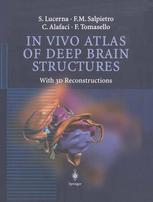

Most ebook files are in PDF format, so you can easily read them using various software such as Foxit Reader or directly on the Google Chrome browser.
Some ebook files are released by publishers in other formats such as .awz, .mobi, .epub, .fb2, etc. You may need to install specific software to read these formats on mobile/PC, such as Calibre.
Please read the tutorial at this link: https://ebookbell.com/faq
We offer FREE conversion to the popular formats you request; however, this may take some time. Therefore, right after payment, please email us, and we will try to provide the service as quickly as possible.
For some exceptional file formats or broken links (if any), please refrain from opening any disputes. Instead, email us first, and we will try to assist within a maximum of 6 hours.
EbookBell Team

5.0
28 reviewsIn the first half of the twentieth century, the study of neuroanatomy was essentiallybased on the observations made by scientists on brain cadavers fixed with standard techniques. These studies have produced well-known tools such as the stereotactic atlas, which have proven to be extremely useful and irreplaceable for neurosurgeons, neuroradi ologists, neurologists and neuroanatomists. In particular, the Talairach and Schaltenbrandt atlases are considered the most presti gious and up-to-date work available today. The recent introduction of neuroimaging, especially nuclear magnetic resonance, together with the exciting and tremendous progress made in computer graphics, has allowed us to approach neuroanatomy directly in living patients with more accuracy and a high degree ofdetail. This work, after a short introduction which explains the methodolo gy used, is divided into four types of sections: three types ofsections obtained from the same brain and orientated in the standard axial, sagittal, and coronal spatial planes and one type of section of three dimensional pictures obtained from the computerized processing of the previous pictures. The organization and the life-size tables obtained by magnetic reso nance make this work similar to a classic stereotactic atlas, although the authors do not claim to reach the high level of precision which such atlases usually provide. The abbreviations used are based on Latin nomenclature,in order to be understood and recognized world wide, and are supported by a system of color codes useful for the identification ofbrain structures.